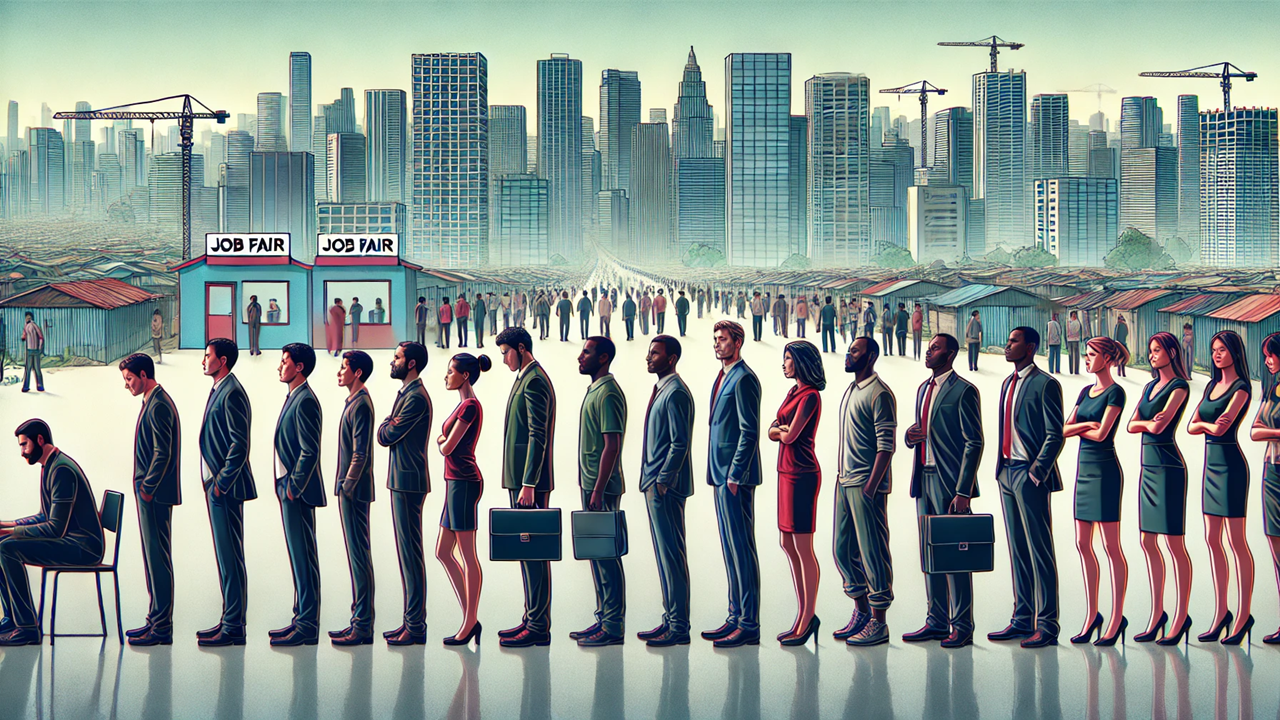Unveiling the Real Employment Crisis: Women and Developing Countries Left Behind
The ILO's May 2024 report highlights global employment challenges, with significant gender disparities and persistent underemployment in developing countries. It emphasizes the need for inclusive policies that go beyond GDP growth to address these issues effectively.

Global Unemployment Trends
As we move further into 2024, the global employment landscape presents a mixed picture. The International Labour Organization’s (ILO) "World Employment and Social Outlook: May 2024 Update" reveals a slight improvement in the global unemployment rate, projected to dip to 4.9% from 5.0% in 2023. Despite this optimistic headline, the underlying reality is far more complex and concerning.
A Closer Look at the Numbers
The global unemployment rate’s modest decline masks a significant and persistent employment deficit. In 2024, a staggering 402 million people are actively seeking work but remain jobless. This includes 183 million individuals who meet the strict criteria for unemployment. The employment gaps are even more pronounced in developing countries, where economic structures struggle to provide sufficient job opportunities, particularly for women.
Women Bear the Brunt
One of the most striking findings of the ILO report is the severe gender disparity in employment. In 2024, only 45.6% of women aged 15 and above are employed, compared to 69.2% of men. This 23.6 percentage point gap highlights the systemic barriers women face in the labor market. The report identifies family responsibilities, particularly unpaid care work, as a major factor holding women back. Social norms and the lack of supportive care policies exacerbate this issue, forcing many women to choose between work and family.
When women do manage to secure employment, they face stark income disparities. In high-income countries, employed women earn 73 cents for every dollar earned by men. This gap widens dramatically in low-income countries, where women earn just 44 cents to the dollar. Such inequities underscore the urgent need for policies that support women's participation in the workforce and ensure equal pay for equal work.
Macroeconomic Developments and Their Implications
The global economic environment has shown some resilience, with GDP growth projected at 3.2% for 2024. Decreasing global inflation is a positive sign, potentially mitigating the erosion of real wages experienced in recent years. However, real wages globally remain slightly below 2019 levels, highlighting the lingering impact of recent economic turbulence.
The medium-term economic outlook is fraught with uncertainty. Significant monetary and fiscal policy adjustments are anticipated worldwide, which could have delayed but substantial impacts on labor markets. Countries facing multiple challenges, such as conflict, food insecurity, and rising debt, are particularly vulnerable. These conditions limit the potential for broad-based improvements in labor market outcomes, underscoring the need for targeted interventions.
The Persistent Challenge of Labour Underutilisation
Despite some positive economic indicators, labor underutilization remains a pervasive issue globally. The unemployment rate, though important, does not fully capture the extent of employment deficits. The ILO highlights the necessity of broader measures to assess labor market health accurately. Indicators like the jobs gap and LU3 reveal significant underutilization, particularly in the Arab States and Africa, where the jobs gap rates are 20.5% and 17.4%, respectively.
Regional disparities further complicate the picture. Asia and the Pacific have a lower job gap rate at 7.5%, while unemployment rates vary less dramatically across regions, except in the Arab States, where unemployment stands at 10.3%. These figures illustrate the uneven distribution of labor market challenges and the need for region-specific strategies.
Beyond GDP: Measuring Real Progress
While GDP growth remains a crucial driver of labor market conditions, the ILO report stresses that it is not a panacea for sustainable development. Since the adoption of the Sustainable Development Goals (SDGs) in 2015, the pace of poverty reduction has slowed significantly. This decoupling of GDP growth from poverty reduction highlights the limitations of relying solely on economic output as a measure of progress.
The share of informal employment has remained stubbornly high, growing from 1.7 billion in 2005 to 2.0 billion in 2024. This trend underscores the insufficiency of formal job creation in keeping up with a growing working-age population. A comprehensive approach that prioritizes sustainable, inclusive growth is essential to fulfill the promise of the 2030 agenda.
The ILO's latest update offers a sobering reminder that while headline unemployment rates might show improvement, deep-rooted issues of labor underutilization and gender disparity persist. The report calls for a holistic approach to labor market policies, focusing on inclusive growth and social progress beyond mere GDP figures. Addressing gender disparities, supporting unpaid care work, and creating equitable job opportunities in developing countries are critical steps towards a more just and sustainable future.
- FIRST PUBLISHED IN:
- Devdiscourse










